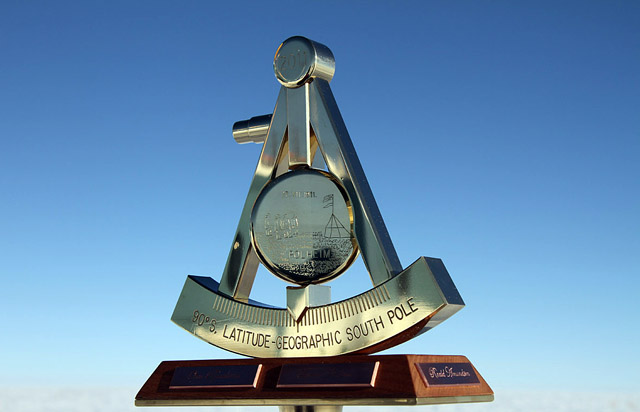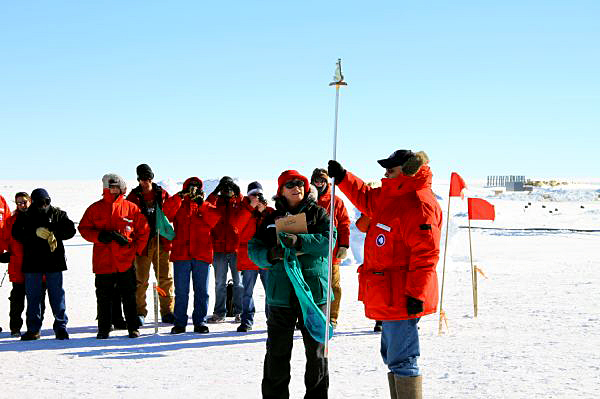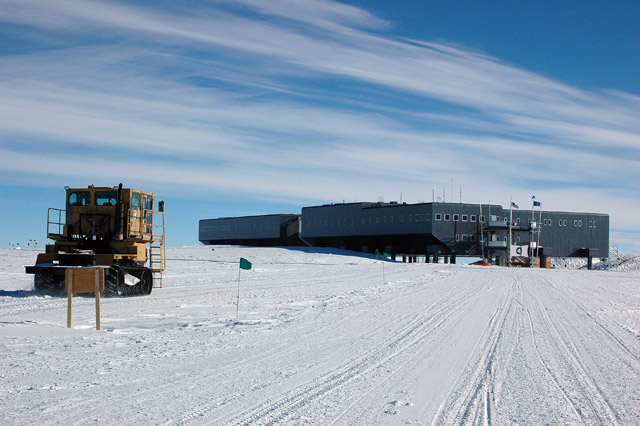A century laterNew South Pole geographic marker celebrates 100 years of discoveryPosted January 3, 2011
A new year and an old century merged at the South Pole on Jan. 1, 2011. U.S. Antarctic Program The new bronze marker is in the shape of a sextant, an instrument used for navigation in the Age of Exploration. There are 47 individual degree marks on both sides at the bottom of the marker, representing the number of people who wintered at the South Pole in 2010. In addition, a free-spinning “medallion” sits in between the angled arms of the bronzed sextant, which rests on a pedestal that displays the names of Amundsen's crew. On one engraved side is a well-known image of Amundsen and three other men admiring a tent flying the Norwegian flag at the South Pole. On the other is an engraving of the modern South Pole Station Winter-over machinist Derek Aboltins fabricated the 2011 marker based on the design by fellow winter-over David Holmes. Each crew that winters over at the station designs and builds a new marker, which the following summer crew places during a ceremony to reposition the marker on Jan. 1. The station sits on a moving ice sheet, which shifts about 10 meters, or 30 feet, each year. This year’s ceremony included a speech by Renée-Nicole Douceur, the 2011 South Pole winter site manager. In her remarks, Douceur said, “In remembrance of those who risked and gave their lives in discovery of this vast unknown continent — and to those who now, 100 years later, turn to the heavens and inner earth, to discover and explore the new frontiers of tomorrow — we unveil this most befitting marker that embodies the spirit of all explorers and adventurists who set foot at South Pole.” The first pole marker was created in 1959, though it was intended to reside in the research station that had been built by the U.S. Navy in 1956. During the 1976-77 season, the U.S. Geological Survey The tradition of creating a new marker each year appears to date back to the 1980s, with the designs becoming more and more elaborate over the years. For a fuller history of the South Pole geographic marker, see the previous article, A Good Point. |



For USAP Participants |
For The Public |
For Researchers and EducatorsContact UsU.S. National Science FoundationOffice of Polar Programs Geosciences Directorate 2415 Eisenhower Avenue, Suite W7100 Alexandria, VA 22314 Sign up for the NSF Office of Polar Programs newsletter and events. Feedback Form |




